Value of Twitter and other forms of Social Networking tools
Social Networking tools used currently with the majority of individuals are:
- Twitter;
- Instagram;
- Facebook;
- Twoo;
- Yahoo Messenger;
- E.t.c.
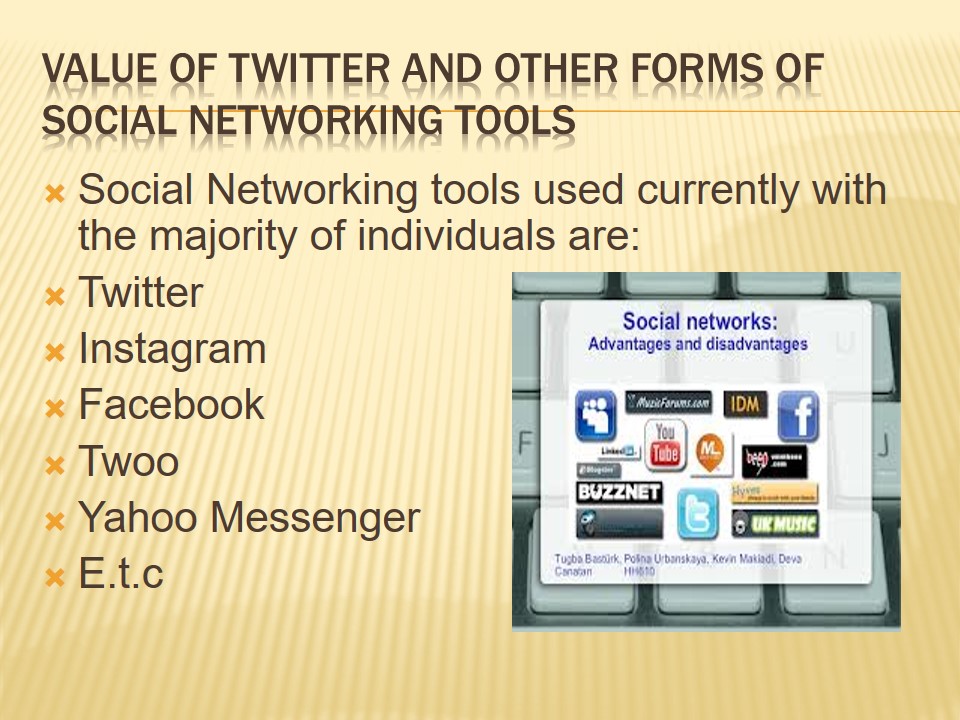
Application in business
- Medium of advertising their products and services.
- Means of communicating to customers through responding to their complaints and suggestions.
- Means of establishing a personal relationship with the customers.
- Promotes brand loyalty as the customers feel the business cares for them.
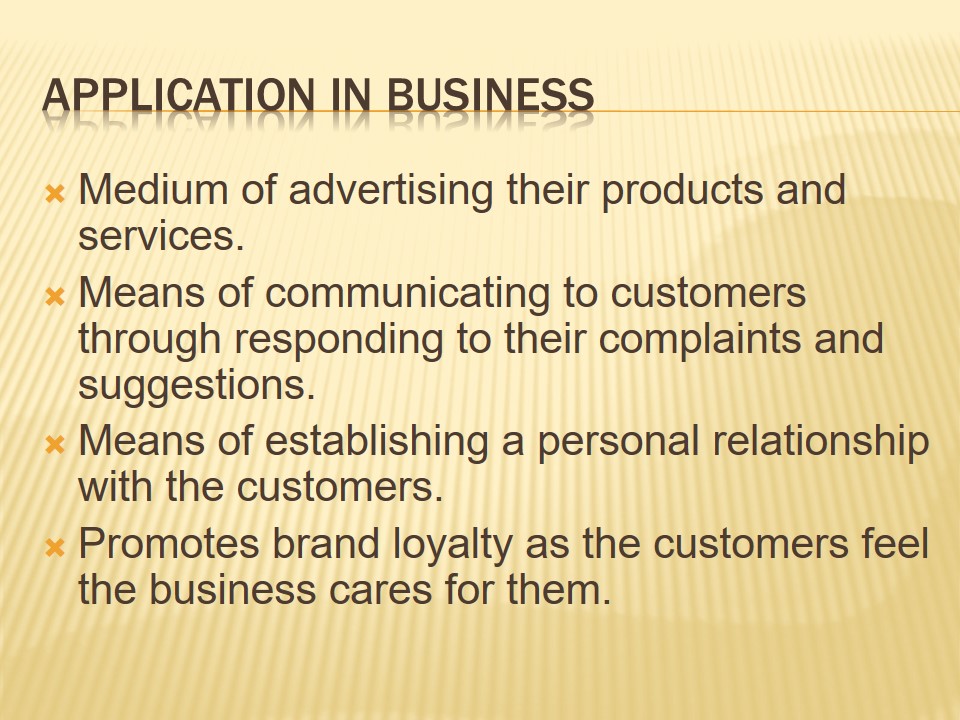
Value Addition in business
- Reach clients not easily accessible through conventional methods of media adverts such as television and radio (Kadushin, 2012).
- A cheap means of advertising.
- Promotes timely feedback both on the advantages and disadvantages of their products.
- Ensures the business is in touch with the latest trends in the market.
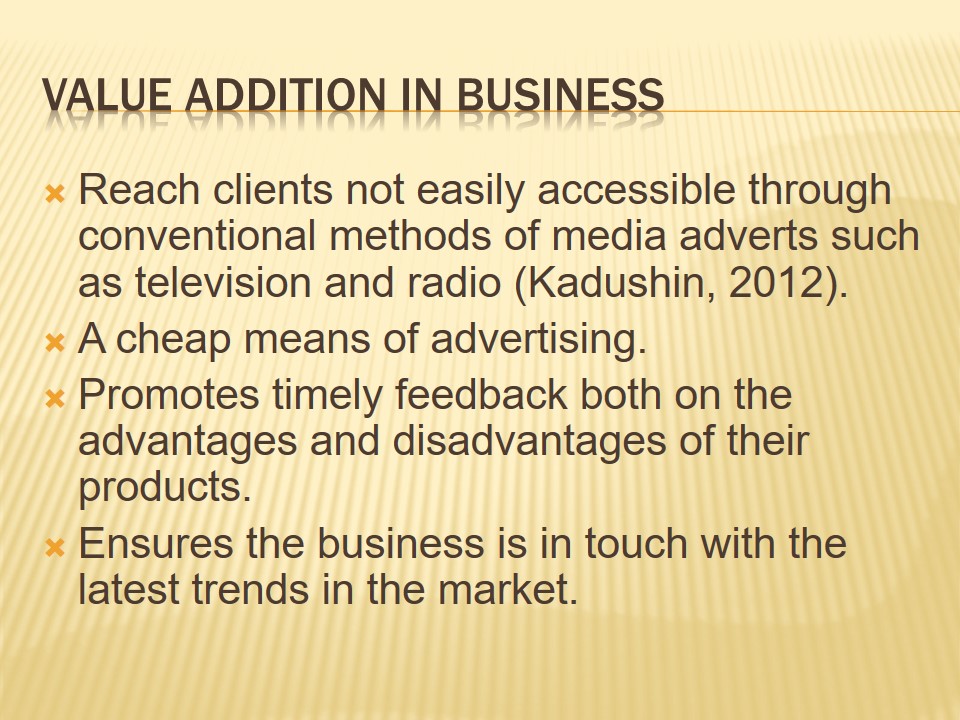
Real life Application
“Dell is believed to have generated more than $3m in incremental revenue through Twitter within a year” (Social media: A tactical tool or a core business strategy, p.1).
Dell is a reputable electronics company, yet in some ways it has embraced the use of social networking sites; thus, this is a largely untapped potential goldmine that can add a lot of value to the business.
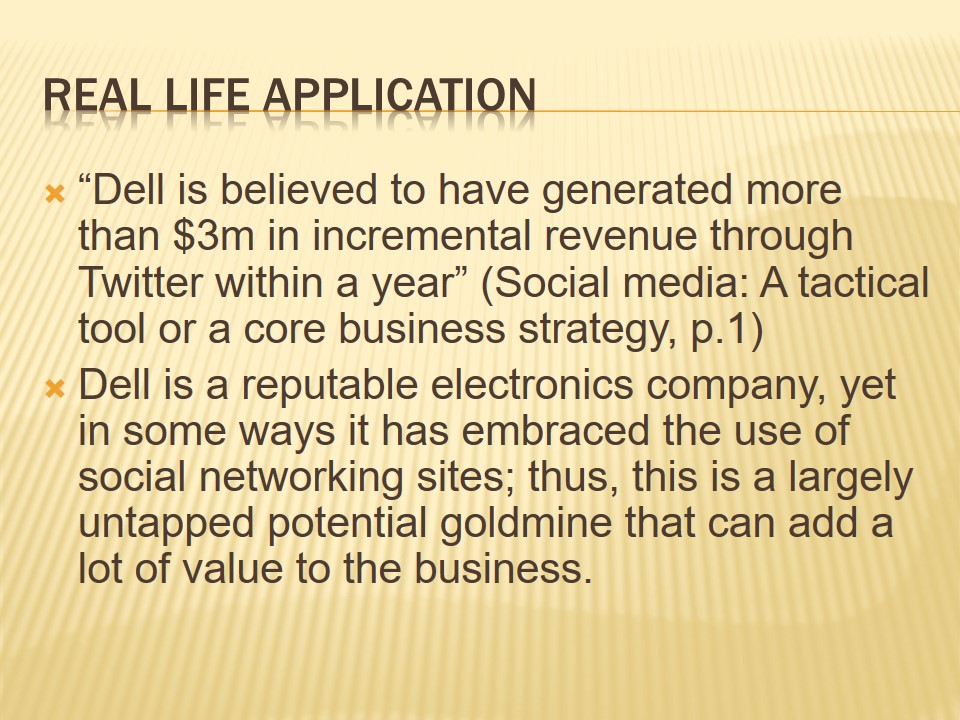
Doing away with social sites during working hours
- The most important question is whether or not the use of social networking sites should be done with or not?
- Also, are there benefits of allowing the use of social networking sites during working hours? If yes, what are they?
- What do other scholars think about this issue?
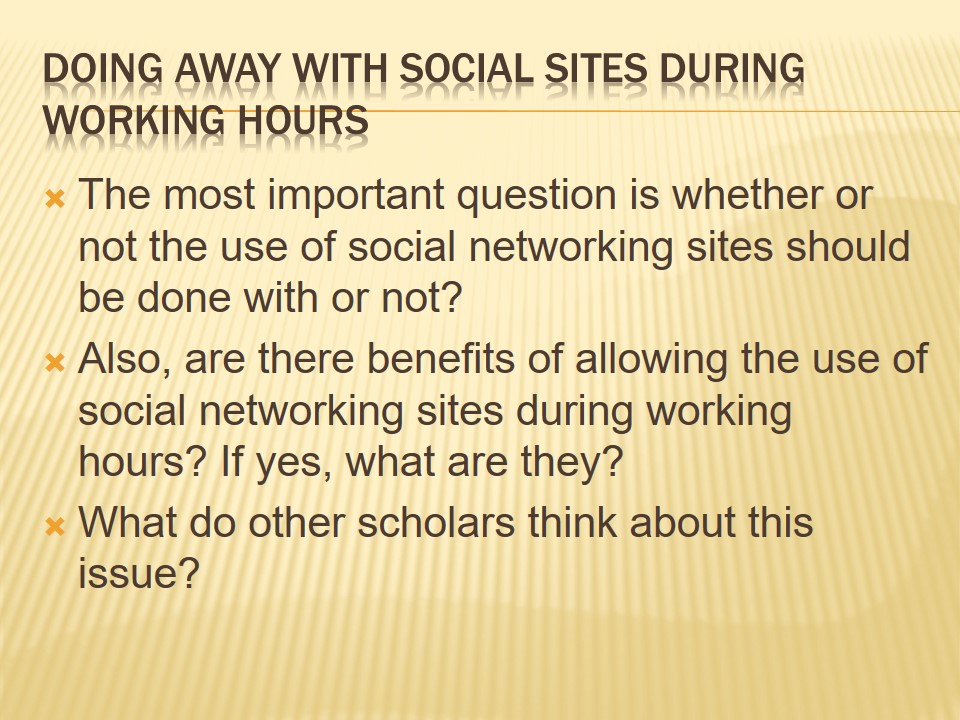
Arguments For and Against
- Most employees are young and techno conversant. Hence, they clearly understand the company’s rules which require them to separate their personal lives and work.
- Employees may use the sites to find new information that leads to the increased revenues of the company.
- They also interact with their peers working for the competitors and thus get information about the latest trends in the market (Kadushin, 2012).
- They also learn new laws that are directly or indirectly related to the company’s business and in this case the company is not justified to cut off this form of communication as it could lead to reduced sales and revenues of the company.
- There is also a remedy if the company believes employees are wasting time, then they should advocate for them to have two social networking accounts just as it is advocated by Alan Katz’s, who “finds the now-common practice of having multiple Facebook accounts, one personal and one business, to be a smart strategy for using the site” (Galentine, p.2).
- It is also through the social media that we are able to research the different preferences of our potential customers or corporate companies.
- Thus, in the work process we are able to provide a service that suits them and meets their immediate and long term needs.
- Restricting access to social media from now henceforth, will banish us to offering services and products to our customers that they may not like. This will lead to dissatisfaction among the customers, and thus a reduction in revenues of our company.
- When a business does not understand its clientele then they may end up producing unfavorable products.
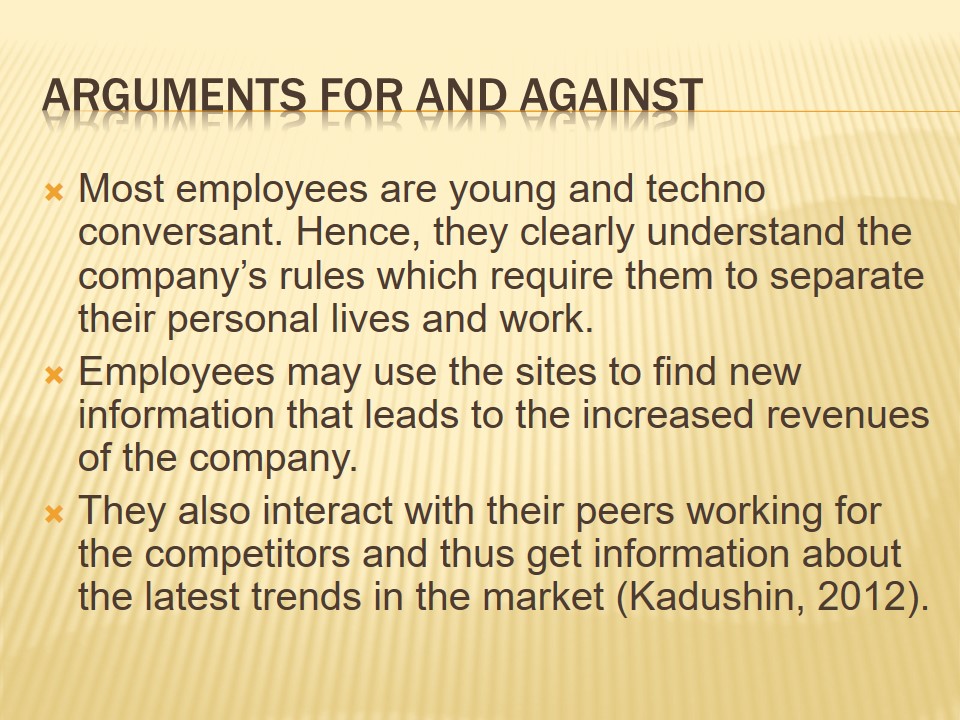
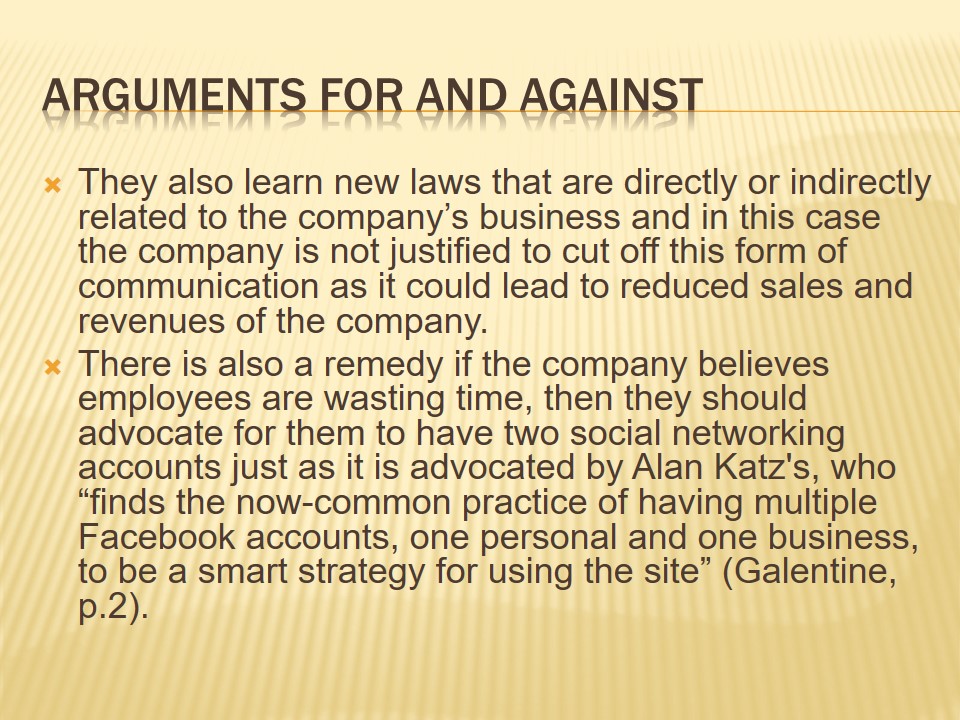
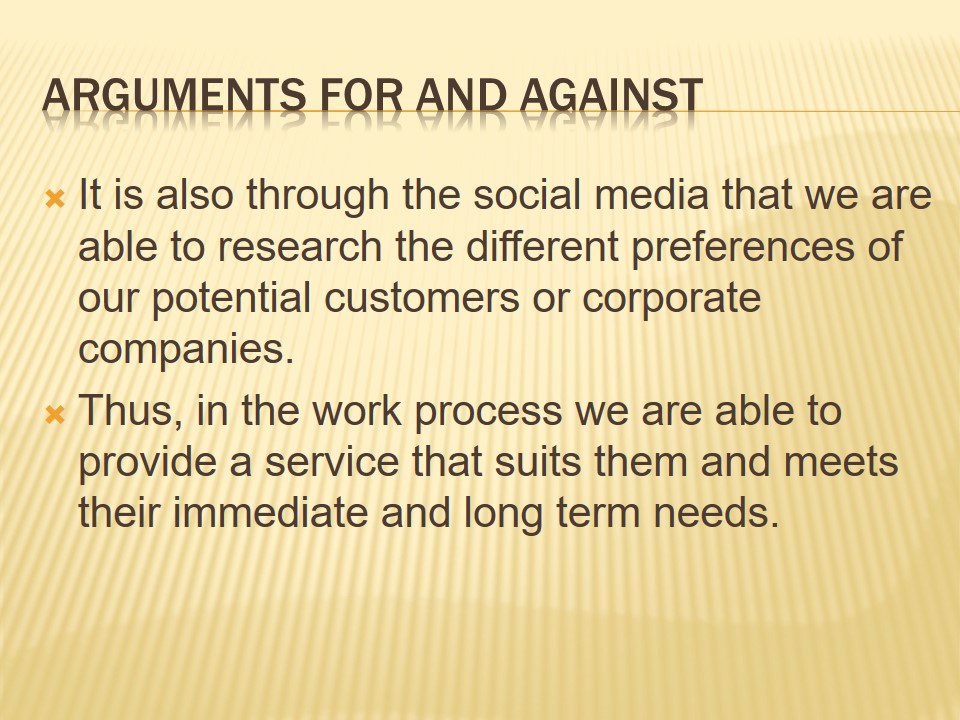
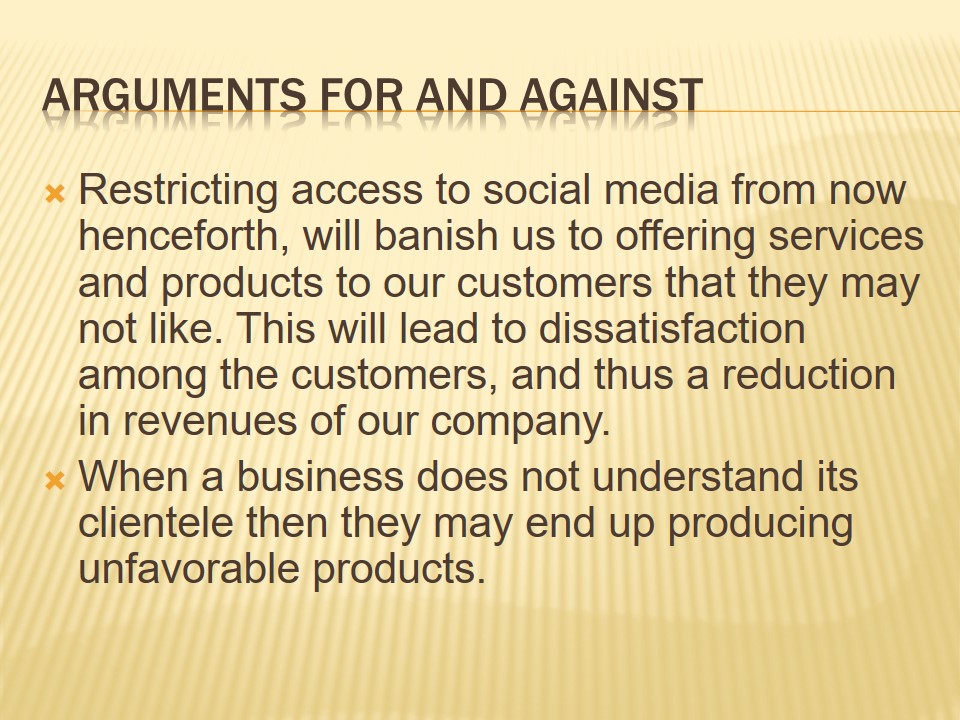
Analysis
- The increased number of companies that have their own social media sites that enable them to receive and reply customer feedback is evidence of the relevance of social networking in business.
- The companies also use the same sites to monitor and evaluate the behavior of their potential employees; they do this by monitoring their updates and comments.
- Thus, this saves the company from hiring controversial or troublesome staff.
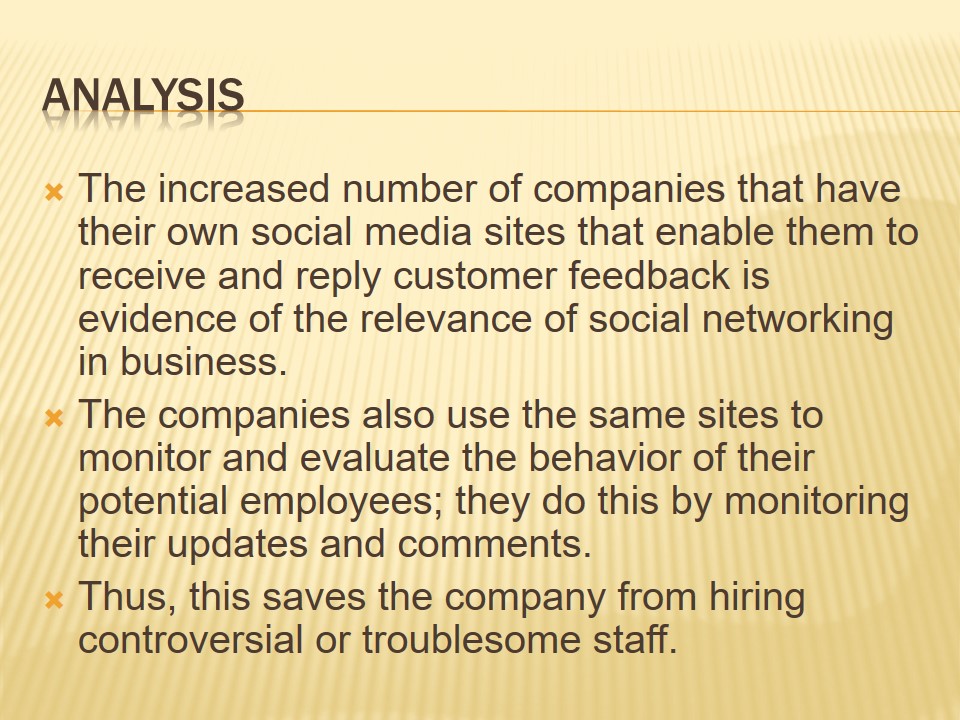
Conclusion
- Embracing the use of Twitter and other social media tools is not only beneficial in terms of increasing the company’s revenue and employee performance, but it is also relevant and valuable to the company itself.
- Hence, I am of the opinion that the companies should provide access to social media tools especially Twitter and Facebook during working hours.
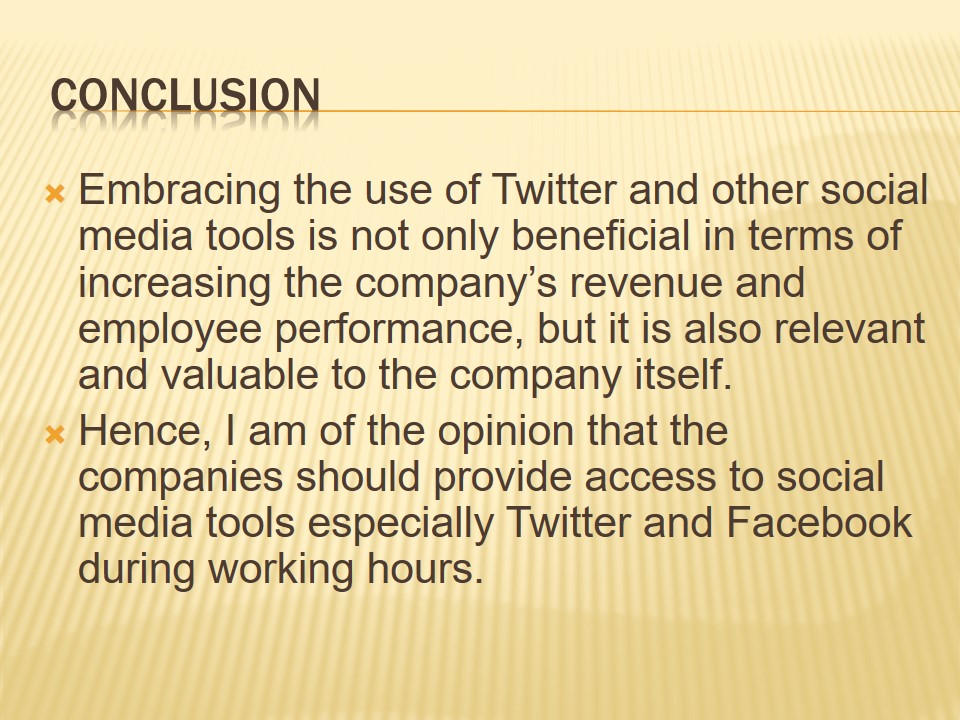
References
Galentine, E. (2011). The art of social media success; with a background in both Employee benefits and politics, success was in the cards for Alan Katz’sHealth care reform blog. Employee Benefit Advisor, 9(2), 1-32. Web.
Kadushin, C. (2012).Understanding social networks: Theories, concepts, and findings. Oxford, UK: Oxford University Press.
Social media: A tactical tool or a core business strategy. (2011). Drapers. Web.